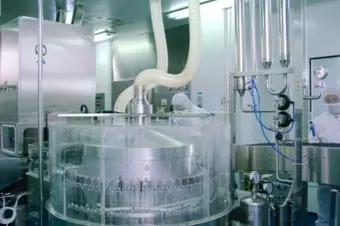Dihydrostreptomycin API Manufacturers & Suppliers
Find, compare & contact
Filters
Custom request?
Type
Production region
Qualifications
Country of origin

Professionalism: 20 years of experiences in pharma

Responsibility: One-step supply solution

Reliability: Considerate after-sales service
+ 0
All certificates
Distributor
Produced in:
Established in: 1987
MOQ: 1 kg
Employees: 50+

ISO 9001:2015 & SGS audited supplier

One-stop CDMO Solutions for APl and Key intermediates

Specialized in APIs & Pharmaceutical Intermediates for 38 years
+ 0
All certificates
How does it work?
You can register for free as long as you are registering on behalf of a legal company related to the pharmaceutical industry
Search in the search bar the product that you’re looking for. We’ll show you an overview of all available suppliers. Use the filters to select the relevant suppliers only
Have you found interesting suppliers? Then it’s time to contact them. Use the send inquiry button and send them a message. You can send for each product, 3 inquiries per week
Suppliers get notified by Pharmaoffer that they’ve received a new inquiry. They will come back to you with their questions, certificates, and offer in the chat on Pharmaoffer. We will send you an email in case of any news
Does the supplier meet your quality and commercial requirements? Then you can place the order. Just follow the steps of our order module
Looking for Dihydrostreptomycin API 128-46-1?
- Description:
- Here you will find a list of producers, manufacturers and distributors of Dihydrostreptomycin. You can filter on certificates such as GMP, FDA, CEP, Written Confirmation and more. Send inquiries for free and get in direct contact with the supplier of your choice.
- API | Excipient name:
- Dihydrostreptomycin
- Synonyms:
- DHMS , Dihidroestreptomicina , Dihydrostreptomycine , Dihydrostreptomycinum , DST , N,N'''-[(1R,2R,3S,4R,5R,6S)-4-({5-deoxy-2-O-[2-deoxy-2-(methylamino)-a-L-glucopyranosyl]-3-C-(hydroxymethyl)-a-L-lyxofuranosyl}oxy)-2,5,6-trihydroxycyclohexane-1,3-diyl]diguanidine , N,N'''-[(1R,2R,3S,4R,5R,6S)-4-({5-deoxy-2-O-[2-deoxy-2-(methylamino)-alpha-L-glucopyranosyl]-3-C-(hydroxymethyl)-alpha-L-lyxofuranosyl}oxy)-2,5,6-trihydroxycyclohexane-1,3-diyl]diguanidine , N,N'''-[(1R,2R,3S,4R,5R,6S)-4-({5-deoxy-2-O-[2-deoxy-2-(methylamino)-α-L-glucopyranosyl]-3-C-(hydroxymethyl)-α-L-lyxofuranosyl}oxy)-2,5,6-trihydroxycyclohexane-1,3-diyl]diguanidine
- Cas Number:
- 128-46-1
- DrugBank number:
- DB11512
- Unique Ingredient Identifier:
- P2I6R8W6UA
General Description:
Dihydrostreptomycin, identified by CAS number 128-46-1, is a notable compound with significant therapeutic applications. Dihydrostreptomycin is an aminoglycoside antibiotic. In humans, the use of dihydrostreptomycin has been associated with ototoxicity. The FDA withdrew its approval for the use of all drug products containing dihydrostreptomycin sulfate.
Classification:
Dihydrostreptomycin belongs to the class of organic compounds known as aminocyclitol glycosides. These are organic compounds containing an amicocyclitol moiety glycosidically linked to a carbohydrate moiety. There are two major classes of aminoglycosides containing a 2-streptamine core. They are called 4,5- and 4,6-disubstituted 2-deoxystreptamines, classified under the direct parent group Aminocyclitol glycosides. This compound is a part of the Organic compounds, falling under the Organic oxygen compounds superclass, and categorized within the Organooxygen compounds class, specifically within the Carbohydrates and carbohydrate conjugates subclass.
Categories:
Dihydrostreptomycin is categorized under the following therapeutic classes: Agents that produce neuromuscular block (indirect), Aminoglycoside Antibacterials, Anti-Bacterial Agents, Anti-Infective Agents, Carbohydrates, Glycosides, Nephrotoxic agents, Ophthalmologicals, Sensory Organs. These classifications highlight the drug's diverse therapeutic applications and its importance in treating various conditions.
Dihydrostreptomycin is a type of Anti-infective Agents
Anti-infective agents are a vital category of pharmaceutical active pharmaceutical ingredients (APIs) used in the treatment of various infectious diseases. These agents play a crucial role in combating bacterial, viral, fungal, and parasitic infections. The demand for effective anti-infective APIs has grown significantly due to the increasing prevalence of drug-resistant microorganisms.
Anti-infective APIs encompass a wide range of substances, including antibiotics, antivirals, antifungals, and antiparasitics. Antibiotics are particularly important in fighting bacterial infections and are further categorized into different classes based on their mode of action and target bacteria. Antivirals are designed to inhibit viral replication and are essential in the treatment of viral infections such as influenza and HIV. Antifungals combat fungal infections, while antiparasitics are used to eliminate parasites that cause diseases like malaria and helminthiasis.
The development and production of high-quality anti-infective APIs require stringent manufacturing processes and adherence to regulatory standards. Pharmaceutical companies invest heavily in research and development to discover new and more effective anti-infective agents. Additionally, ensuring the safety, efficacy, and stability of these APIs is of utmost importance.
The global market for anti-infective APIs is driven by factors such as the rising incidence of infectious diseases, the emergence of new and drug-resistant pathogens, and the growing demand for improved healthcare infrastructure. Continuous advancements in pharmaceutical technology and the development of innovative drug delivery systems further contribute to the expansion of this market.
In conclusion, anti-infective agents are a critical category of pharmaceutical APIs that play a pivotal role in treating infectious diseases. Their effectiveness in combating various types of infections makes them essential components in the arsenal of modern medicine.
Dihydrostreptomycin manufacturers | traders | suppliers
We have 2 companies offering Dihydrostreptomycin produced in 0 different countries.
Get in contact with the supplier of your choice:
- Changzhou Comwin Fine Chemicals Co., Ltd from China, product country of origin China
- Sinoway industrial Co.,Ltd from China, product country of origin China
Let the supplier know whether you are looking for a product with a specific monograph such as EP (Ph. Eur.), USP, JP, BP or another quality. Or, whether you are looking for hydrochloride (HCl), anhydricum, base, micronisatum or a specific purity.
You can use the filters to find high-quality suppliers. For example, you can select GMP, FDA or ISO certified suppliers. Visit our FAQ page or use the chat box in the corner to get more information about Pharmaoffer.











